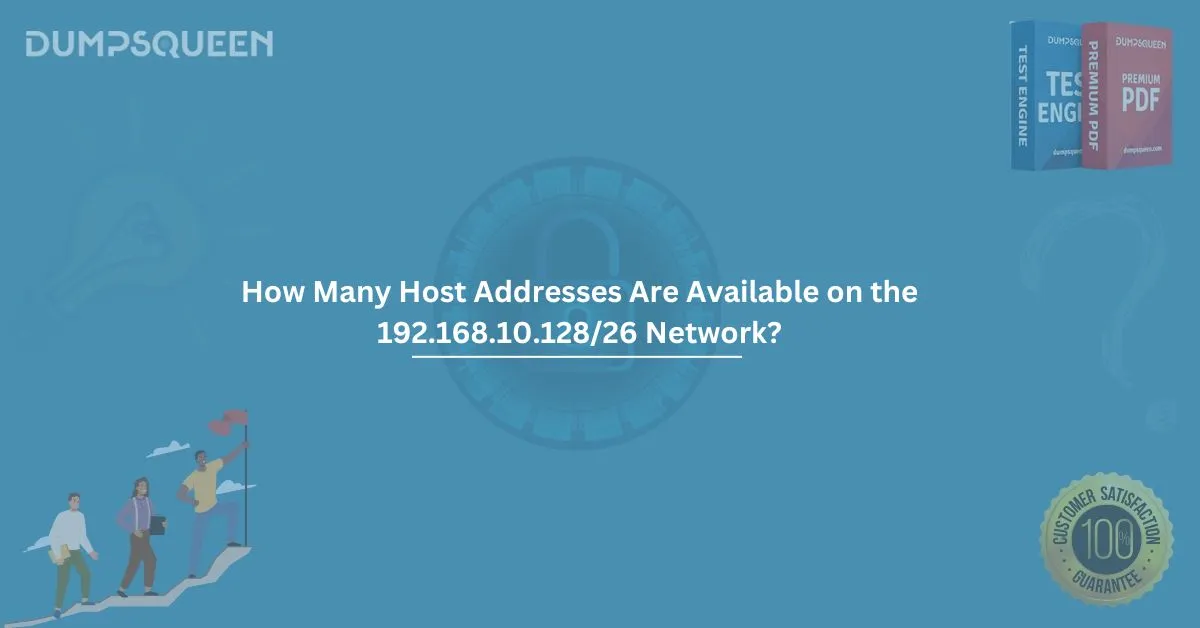When dealing with networking concepts, understanding IP addressing and subnetting is fundamental. For network administrators, it's crucial to know how to calculate host addresses available in any given network. In this blog, we will dive deep into the 192.168.10.128/26 network and explore how many host addresses are available.
Understanding the Basics: IP Address and Subnet Mask
Before we jump into calculating the number of host addresses available, let's break down the components of the 192.168.10.128/26 network.
- IP Address: 192.168.10.128 is a private IP address commonly used in local networks, especially in home and office environments.
- Subnet Mask: The /26 subnet mask refers to the number of bits used to define the network portion of the IP address. In a subnet mask, the first 26 bits are set to 1, and the remaining bits are set to 0.
A subnet mask of /26 means that 26 bits are dedicated to the network, and the remaining 6 bits are used for host addresses. This helps us determine how many hosts can be supported in a network.
Calculating the Number of Host Addresses
To calculate the number of host addresses, we use the formula:
Number of Host Addresses=2Number of Host Bits−2\text{Number of Host Addresses} = 2^{\text{Number of Host Bits}} - 2Number of Host Addresses=2Number of Host Bits−2
The subtraction of 2 accounts for two special addresses:
- Network Address - The first address in the network is reserved for the network address and cannot be assigned to any host.
- Broadcast Address - The last address in the network is reserved for broadcast communication.
In the case of a /26 subnet, we have 6 bits available for host addresses (since 32 bits - 26 network bits = 6 host bits). Plugging this into the formula:
26−2=64−2=622^6 - 2 = 64 - 2 = 6226−2=64−2=62
Thus, the 192.168.10.128/26 network can accommodate 62 host addresses. This means you can assign 62 devices (e.g., computers, printers, smartphones) in this subnet.
Breaking Down the Network
To better understand, let's look at the structure of the 192.168.10.128/26 network:
- Network Address: 192.168.10.128
- Usable Host Range: 192.168.10.129 to 192.168.10.190
- Broadcast Address: 192.168.10.191
The usable host addresses are from 192.168.10.129 to 192.168.10.190. The first and last addresses are reserved for the network and broadcast, respectively, as we mentioned earlier. So, in total, there are 62 usable addresses in this range.
Subnetting in Action
Let’s explore how subnetting and the subnet mask work together to create these usable host addresses. The subnet mask 255.255.255.192, corresponding to the /26 prefix, allows the network to support 64 total IP addresses. Out of these, the first and last addresses are used for special purposes (network and broadcast), leaving 62 IP addresses for devices.
This subnetting process is essential when designing networks, ensuring efficient utilization of IP addresses and proper network segmentation.
Real-World Applications of Subnetting
Understanding how many host addresses are available on a specific network is critical for several reasons:
- Efficient IP Address Management: Network administrators can use subnetting to allocate IP addresses more efficiently, ensuring that no address space is wasted.
- Scalability: With a clear understanding of how many hosts can be supported in a subnet, you can plan for future growth, ensuring that the network can accommodate new devices without having to reconfigure the network.
- Security: Subnetting helps isolate segments of a network, limiting broadcast traffic and improving security by segmenting sensitive data or devices from the rest of the network.
Conclusion
Understanding how many host addresses are available in a specific subnet is essential for efficient network design and management. For the 192.168.10.128/26 network, there are 62 usable host addresses, which provide ample room for devices on a local network. Proper knowledge of subnetting and the calculation of available host addresses ensures that network administrators can optimize IP address usage, improve security, and plan for future growth.
Whether you're preparing for exams or working in the field, mastering IP addressing and subnetting is an essential skill. For those looking to further their knowledge and improve their networking expertise, Exam Prep Dumps and Study Guide material are great resources to aid in preparation.
Sample MCQ Questions and Answers
Here are some sample multiple-choice questions (MCQs) that you might encounter in your network-related studies. These questions focus on subnetting and calculating host addresses, similar to the 192.168.10.128/26 example.
Question 1: What is the maximum number of host addresses available on a /24 subnet?
A) 254
B) 256
C) 510
D) 512
Answer: A) 254
Explanation: A /24 subnet has 32 - 24 = 8 bits for host addresses. Using the formula 28−2=256−2=2542^8 - 2 = 256 - 2 = 25428−2=256−2=254 usable host addresses.
Question 2: In the 192.168.1.0/28 network, how many host addresses are available for devices?
A) 14
B) 16
C) 30
D) 32
Answer: A) 14
Explanation: A /28 subnet has 32 - 28 = 4 bits for host addresses. Using the formula 24−2=16−2=142^4 - 2 = 16 - 2 = 1424−2=16−2=14 usable host addresses.
Question 3: What is the broadcast address for the 192.168.10.128/26 network?
A) 192.168.10.190
B) 192.168.10.191
C) 192.168.10.192
D) 192.168.10.255
Answer: B) 192.168.10.191
Explanation: The broadcast address is the last address in the network, which in the case of 192.168.10.128/26 is 192.168.10.191.
Question 4: How many IP addresses are available in a /22 subnet?
A) 1022
B) 1024
C) 510
D) 512
Answer: A) 1022
Explanation: A /22 subnet has 32 - 22 = 10 bits for host addresses. Using the formula 210−2=1024−2=10222^{10} - 2 = 1024 - 2 = 1022210−2=1024−2=1022 usable host addresses.



